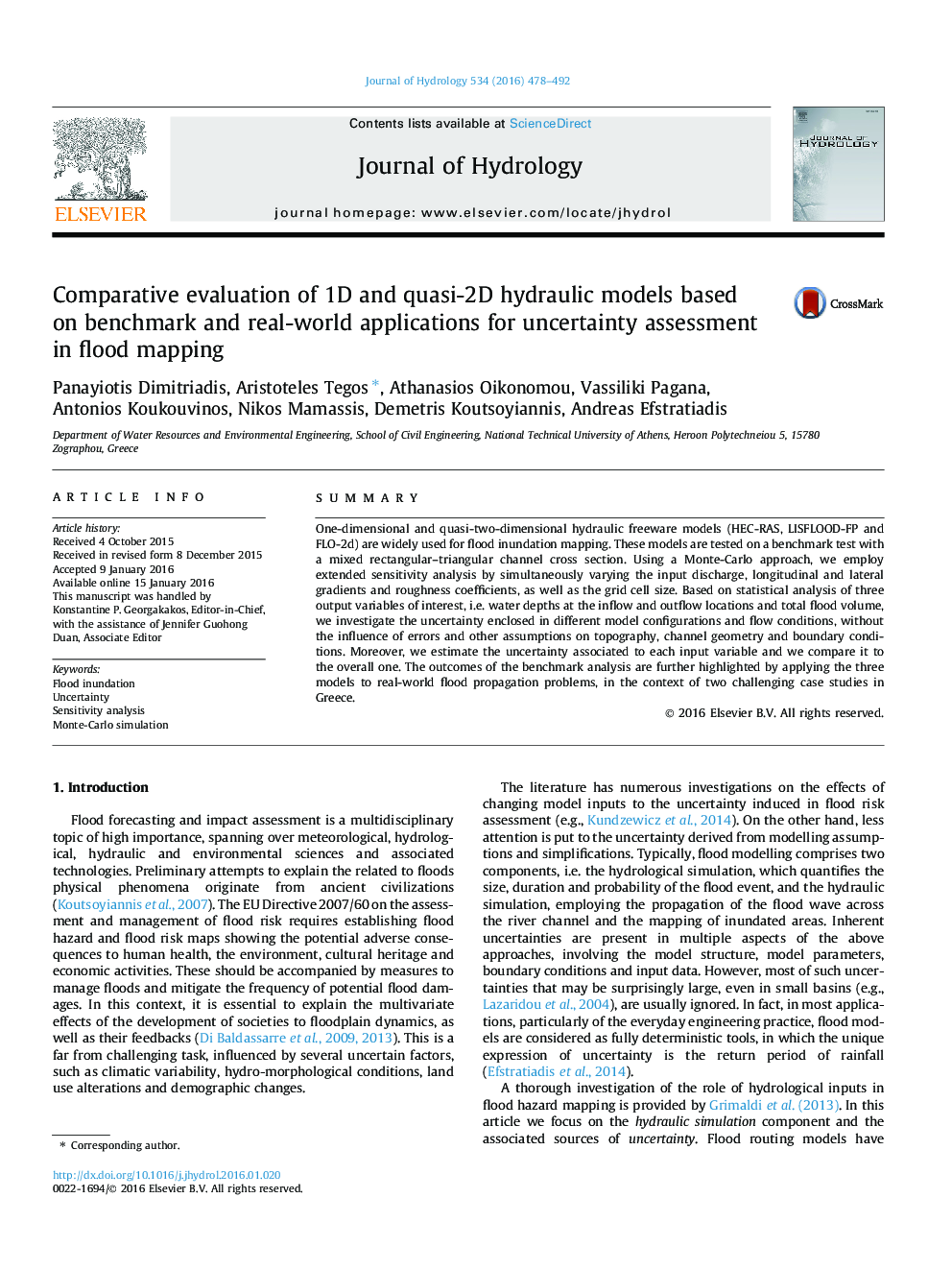| Article ID | Journal | Published Year | Pages | File Type |
|---|---|---|---|---|
| 6410372 | Journal of Hydrology | 2016 | 15 Pages |
â¢We employ benchmark tests to analyze the inherent uncertainties of three flood routing models.â¢We test multiple model configurations against input data generated via Monte Carlo simulation.â¢The model outputs deviate from normality and exhibit negative skewness and fat tails.â¢Models are mainly sensitive against the inflow discharge and the channel friction.â¢Two real-world studies under limited data confirm the outcomes of benchmark analyses.
SummaryOne-dimensional and quasi-two-dimensional hydraulic freeware models (HEC-RAS, LISFLOOD-FP and FLO-2d) are widely used for flood inundation mapping. These models are tested on a benchmark test with a mixed rectangular-triangular channel cross section. Using a Monte-Carlo approach, we employ extended sensitivity analysis by simultaneously varying the input discharge, longitudinal and lateral gradients and roughness coefficients, as well as the grid cell size. Based on statistical analysis of three output variables of interest, i.e. water depths at the inflow and outflow locations and total flood volume, we investigate the uncertainty enclosed in different model configurations and flow conditions, without the influence of errors and other assumptions on topography, channel geometry and boundary conditions. Moreover, we estimate the uncertainty associated to each input variable and we compare it to the overall one. The outcomes of the benchmark analysis are further highlighted by applying the three models to real-world flood propagation problems, in the context of two challenging case studies in Greece.
